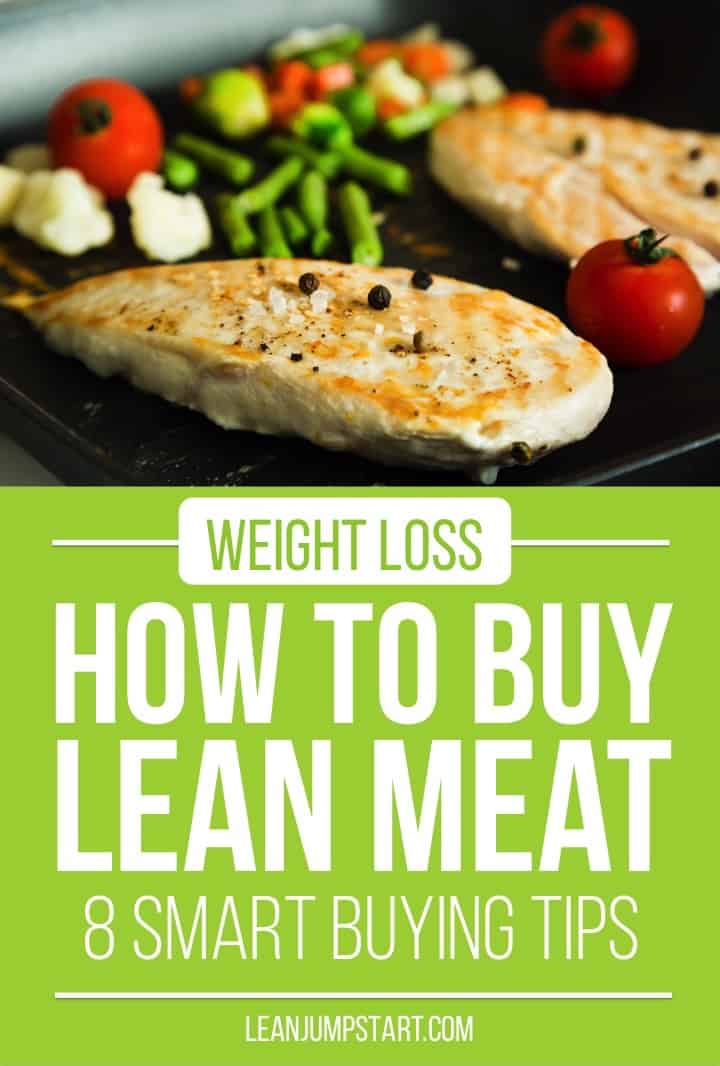This week we are most concerned with protein again. Healthy meats, especially leaner cuts will play an important role. If you don’t eat any animal-based foods – congratulations! You may skip this challenge altogether and work on previous challenges.
Health benefits of protein
Protein is one of the most central components of every cell in your body. Nails and hairs are mostly made of protein. It is an important building block of muscles, bones, blood, cartilage, and skin.
Your body uses protein to repair and build tissues, produce hormones, enzymes and other body chemicals. Protein provides you with energy and helps you to maintain a healthy metabolism.
Animal protein is an important supplier as it is a complete protein and consists of the right amount of essential amino acids that your body cannot synthesize on its own.
Red meat puts you in the danger zone
Eating too much meat could put you in danger zone. “Red or dark meat” (beef, lamb, pork) is suspected to promote cancer, heart disease, and an increased risk for diabetes. Processed meat like hot dogs, deli foods and bacon are linked even more to these diseases. “White meat” like poultry or fish seems to be the better choice.
Contains plenty of saturated fats
In addition, animal protein is low in fiber and high in saturated fat. You will find also huge amounts of unhealthy fats in sausages, cheese, and eggs. Furthermore, purines that are found in animal foods can cause gout.
Thus, experts recommend reducing meat consumption in favor of more plants despite the fact that plant protein has a lower biological value.
Plant protein sources like vegetables, beans, and some grains are generally low in fat but they are lacking in one or more essential amino acids. To get all the amino acids needed to make protein, vegans and vegetarians must eat a variety of protein-containing foods each day to keep their body’s system in good shape.
How much protein per day is recommended
For an average adult, the Institute of Medicine (IOM) recommends a minimum of 0.8 grams of protein for every kilogram (kg) of body weight – per day. That is 15% of your daily energy intake.
That means an adult of 70 kg needs 56 gram of protein per day to keep from slowly breaking down its own tissues. This is equivalent to a 280 gram (almost 10 oz.) steak. Otherwise, it is difficult to find information on the ideal amount of protein in our diet.
It’s the whole food package that counts!
Getting the minimum daily requirements is not a challenge. Most reasonable diets provide enough protein for healthy people. The problem with eating meat is that you rarely eat straight protein. Paying attention to what comes along with the protein in your food choices is the real challenge.
3-step habit change for healthier food choices
Are you a meat lover? Here comes a simple 3-step habit change that helps you to shift to healthier meat consumption – especially if you are eating meat more than three times a week.
You want to become the person who eats leaner, healthier cuts.
- Use your meat consumption as a trigger
- Develop the routine of replacing fatty meat options with fiber- and protein-rich legumes or leaner cuts using the list below. To reduce possible health risks, skip processed foods (hot dogs, deli meats, bacon) and only eat dark meat occasionally.
- After sticking to this routine for more than 1 week, as a reward buy yourself a kitchen tool that conserves cooking space, fuel and time like e.g. a wok or a divided skillet. Make sure to invest in a kitchen gear that you are happy to use regularly. Toss old kitchen gear that you never use.
Take your clean eating to the next level with the Advanced 2 Week Action Plan!
Advanced approach: 2 Week Action Plan
Week 1: Education & Buying Tips
When you are trying to watch your weight or you are concerned about your health, you want the leanest cuts of meat. This week educate yourself about how to make leaner choices:
How to buy lean meat in the grocery store: 8 smart buying tips
- Choose meats with the word “round” in the name, such as bottom round or top round.
- Look for foods with the word “loin” in the name, such as tenderloin, sirloin, and top loin
- Choose meats labeled “95 percent lean.”
- Poultry: One of the best animal protein sources besides the omega-3 fatty acids rich fish is poultry. Choosing a lean cut of turkey breast is ideal for weight-conscious and it is very easy to prepare. In addition, poultry is rich in unsaturated fats. Chicken is one of the most efficient, lean sources of protein available.
- Red meat: A nice, juicy steak from time to time is okay. Choose a lean or extra-lean cut and you will get all of the protein with far less fat. In fact, a top round steak has barely more saturated fat than a similar-sized skinless chicken breast.
- Pork: The pork tenderloin is the leanest cut of pork – as lean as a skinless chicken breast. Extra-lean cuts of ham are very low in fat too. Most other cuts of pork tend to be higher in grams of fat than both beef and poultry.
- Game: Generally leaner than farmed meat, game is usually the better choice due to their diet and their ability to roam freely. Bison, buffalo, venison, and elk are extremely lean and low in saturated fat. The leanest cuts of game poultry are ostrich and pheasant.
- Lamb: The fat content of lamb is similar to beef, some cuts are even higher. Lamb, however, is very rich in essential vitamins and minerals.
Week 2: Awareness and cooking tips
Use this week to learn about quality and best preparation methods. If you can afford it, look for grass-fed beef. It tastes better and is leaner than commercially raised beef from Concentrated Animal Feeding Operations (CAFO). Buy organic chicken if you are worried about GMOs, food poisoning, added hormones or how the chicken was raised.
Here are some more tips helping you making leaner choices:
- Trim any visible pieces of fat before cooking.
- Prepare meat using methods that cut down on fat, such as braising, grilling, steaming, stewing, or stir-frying.
- Eat your meat with a lot of high-fiber vegetables: E.G. braised roast beef with a lot of vegetables in the sauce, steak with a big salad.
- Invest in “healthy cooking gear” like a wok, ceramic pans etc. to make it easy to cook lean meat.
- Include eggs: If you have a healthy blood cholesterol level, eating eggs moderately is healthy and delicious. One hardboiled egg is high in protein, very satiating and it is an easy and great base for lunch. In combination with potatoes, you get a super-powered food pairing.
Already choosing leaner cuts?
My advice is to view meat as a treat. Make it a very limited part of your diet (less than 5%). Try to eat it no more than one time a week and replace it with legumes whenever you can.
Science is clear on the fact that a mostly plant-based diet is much healthier. Research could not prove yet that a vegan, 100% plant-based diet is healthier than a 95% plant-based diet. They could, however, prove that a 90% plant-based nutrition seems to be inferior to a 95% plant-based nutrition. (1)
You can increase the biological availability of protein in plant foods if you combine a vast array of vegetables, legumes and whole grains throughout the day.
Tell me your strategies
What are your ideas for making healthier choices of animal foods in your daily diet? Please share your tips and favorite recipes below in the comments.





I am a total vegetarian n don’t eat cheese n eggs too, can you suggest some thing to replace these
Dear Raj,
congratulations for being vegetarian! My daughter is by the way vegetarian too since she is 3 years old. It was her own decision! So I know your dilemma a bit regarding sufficient protein intake. But don’t despair… there exist many options to include protein in your daily nutrition. Here are some examples: Quinoa (it includes all nine essential amino acids that the body needs for repair and growth), almonds, cashews, beans, chickpeas, tempeh, tofu, edamame, chia seeds, sunflower kernels and many more…
I currently eat mostly chicken and fish. I eat red meat maybe once every 2 weeks.
Hello Tisha,
congratulations! You seem to have already a quite healthy meat consumption.
Please make sure to buy the highest quality of meat and fish whenever you can.
When choosing red meat opt for the leanest cuts as described above!